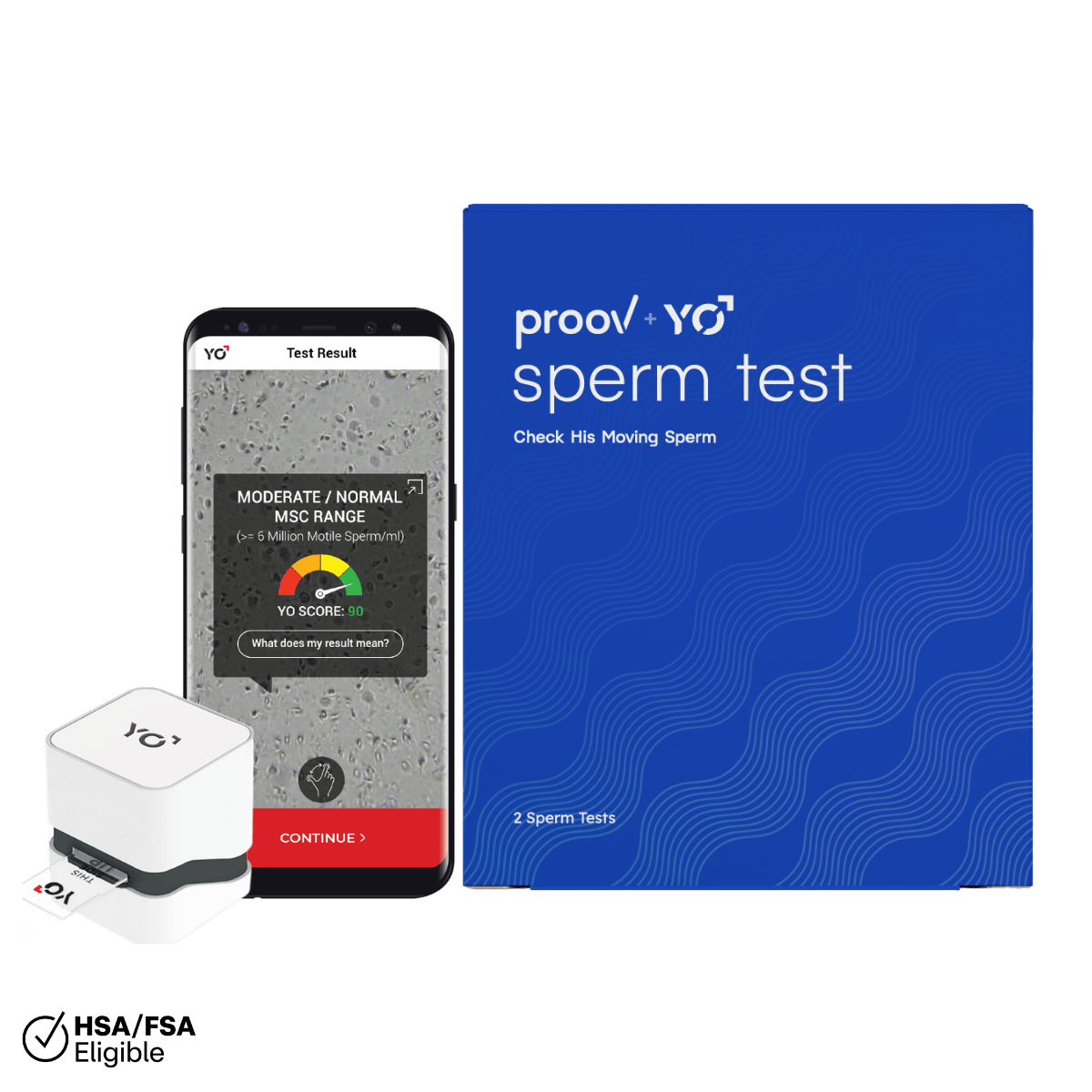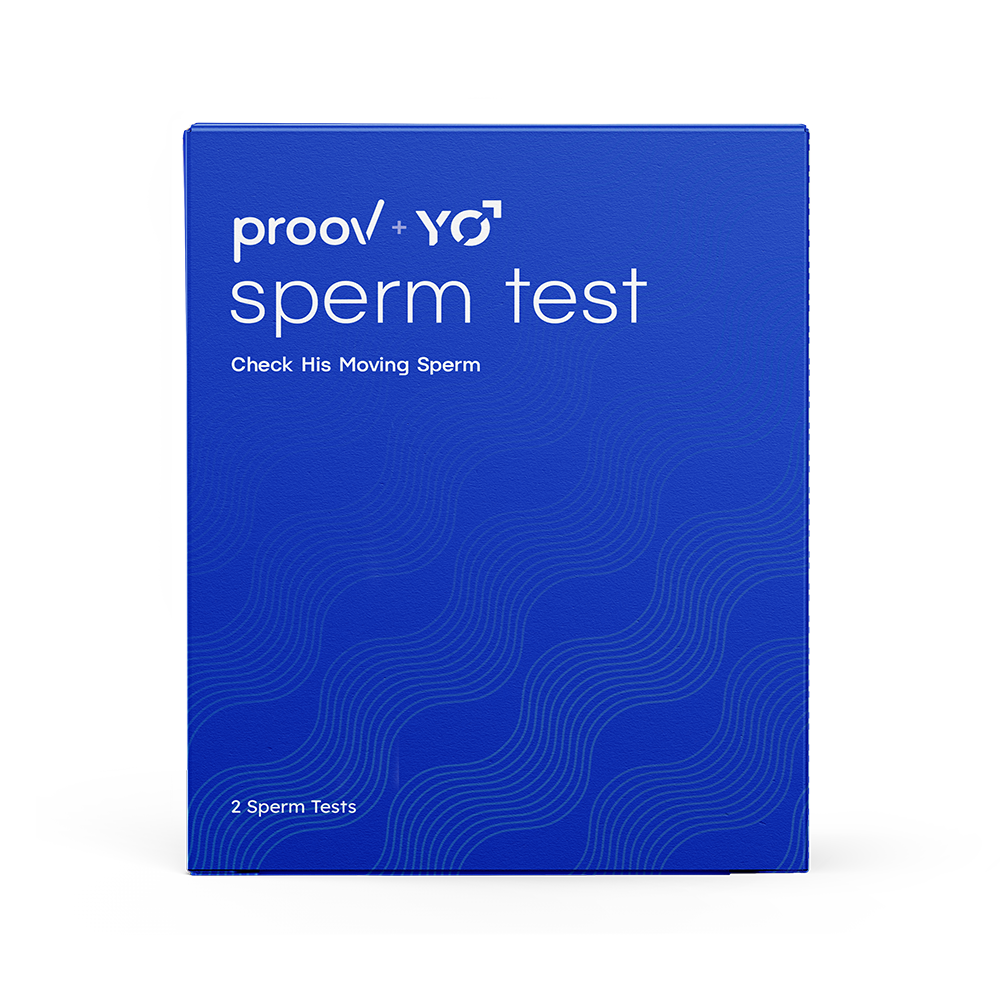Written by: Dr. Amy Beckley, PhD, Founder and Inventor of the Proov test — the first and only FDA-cleared test to confirm successful ovulation at home.
Written on 7/19/21
In order to understand successful ovulation, you first need to understand what a positive Proov PdG test means. Keep reading to find out.
Proov PdG tests are the first and only FDA cleared PdG test to confirm successful ovulation at home. While ovulation tests help you predict your fertile window and when ovulation should occur, PdG tests can help you confirm that you’re ovulating and that it’s healthy enough to allow for the best possible chance at conception.
Proov PdG tests give you an entirely new piece of the fertility puzzle: successful ovulation! In order to understand your ovulation, you first need to understand a positive PdG test meaning. Keep reading to learn more about what a positive means and how to interpret your proov pdg test results!
What is PdG and why should I care about it?
PdG is the main urinary metabolite of progesterone. So, it only makes sense to talk about progesterone first!
Progesterone is one of the two main female sex hormones, and plays an important role in reproduction and your overall health. It is also essential for conception, which is why it’s sometimes called “the pregnancy hormone.”
Progesterone levels are low during the first part of your cycle, but after ovulation, your levels should rise during the second half of your cycle. Progesterone is supposed to remain elevated for several days during your luteal phase to allow for the best possible chance at implantation and pregnancy.
This is because it’s progesterone’s job to ensure the uterine lining is “sticky” enough for an embryo to comfortably implant into. Without enough progesterone present for long enough after implantation, your uterine lining may not be prepared and it can be more difficult to successfully conceive.
When your progesterone levels are adequately elevated for long enough, signaling a successful ovulation, your luteal phase should last at least 11 days. If your body doesn’t produce enough progesterone, your levels may drop too early. This is considered an ovulatory disorder or luteal phase defect, which may lead to implantation issues, early miscarriage, or infertility.
PdG offers a non-invasive way to confirm successful ovulation from home. Since PdG is measured in urine, you can test your levels over several critical days during the luteal phase to ensure they remain elevated for long enough to allow for the best possible chance at conception.
In fact, studies show that elevated levels of PdG during the luteal phase lead to a 92% chance at successful pregnancy, compared to only a 19% chance at successful pregnancy when levels were not elevated. Needless to say, testing your PdG levels can make or break your chances at pregnancy!

Studies show that elevated levels of PdG during the luteal phase lead to a 92% chance at successful pregnancy, compared to only a 19% chance at successful pregnancy when levels were not elevated.
When do I use a PdG test?
With our patented Proov PdG testing protocol, it’s simple to understand how to use Proov and confirm successful ovulation at home. When testing with Proov PdG tests, you must use first morning urine after at least a 6 hour hold. Using anything but first morning urine can cause inaccurate results.
You’ll first want to test the day after your period ends (preferably between cycle days 5 and 10) to establish a baseline. To understand what “elevated” looks like for you, we must first establish a PdG reading at the beginning of your cycle when your levels should be low. A baseline is essential for accurately interpreting your Proov PdG results later in your cycle. Note that your baseline will be negative and that’s what we like to see!
From there, you’ll want to start tracking peak fertility using the ovulation prediction method of your choice. We typically recommend LH tests, like Proov Predict. The Proov Insight app can provide you with numeric LH levels when you use Proov Predict.
Once you observe peak fertility (i.e. your first positive LH test), you’ll then count 7 days and test with Proov PdG tests on days 7, 8, 9, and 10 past peak fertility.
Once you’ve collected your urine sample and dipped your test strip, it’s time to read your results — but only between 5 and 10 minutes post dip! Tests read before 5 minutes or after 10 minutes of processing may be inaccurate.
What does a positive PdG test mean?
What does a positive Proov test look like? Simply put, a positive PdG test confirms that ovulation did in fact occur. This is because Proov PdG tests are calibrated to turn positive when 5 ug/ml of PdG is present in urine, which is the widely accepted standard for confirming ovulation.
However, as we know, confirming ovulation is only a small piece of the quality puzzle. You need to test PdG levels on multiple days (specifically days 7-10 past peak fertility) to have a better understanding of your overall ovulation success.
That being said, we like to see 3-4 positive Proov PdG tests, with a positive result on 10 DPP, to confirm that ovulation was in fact successful. When used with our PdG tests, the Proov Insight app will take your results one step further by providing you with numeric PdG levels and insights based on your Ovulation Score. Here’s a closer look at some Proov PdG outcomes and what they mean (please note this is by no means an exhaustive list of all possible outcomes; our app will provide insights based on your unique PdG results):

Successful ovulation: As we mentioned, ovulation is considered successful when 3-4 Proov PdG tests are positive, as long as you get a positive result on 10 DPP. If you have all 4 positive results or have 3 positives with a positive result on day 10, you are ovulating successfully and ovulation is likely not a barrier to conception.

Weak ovulation or light on PdG: Ovulation is considered weak when your results show that an egg was released but there either wasn’t enough PdG produced post ovulation or your levels dropped too soon following ovulation. Your results can signal weak ovulation if:
- You do not get a positive result on day 10 past peak fertility,
- You only get 1-2 positive results, or
- Your 7-10 DPP tests are lighter than your baseline, but the second line never totally disappears.

No ovulation: This means that ovulation likely did not occur and there was no PdG production. You likely did not ovulate if your 7-10 DPP tests are the same intensity as your baseline (meaning they did not get any lighter, signaling an increase in PdG).
Can I get pregnant with less than 3 positive Proov PdG tests?
Yes — as long as your PdG test results show you’re ovulating, it’s entirely possible to conceive. This means that you either got at least one positive PdG test or your results during the 7-10 DPP window are lighter than your baseline.
However, studies show that low progesterone (and therefore low PdG) can, but does not always, lead to early miscarriage. While it’s possible to have a healthy pregnancy with low PdG levels, we believe that more information, especially in this case, is better. If your PdG results show weak ovulation, we recommend consulting your doctor.
Understanding what a positive Proov PdG test means — and why it’s important to get 3-4 positives during the testing window — can help you better understand successful ovulation. After all, successful ovulation can help you get pregnant faster!













